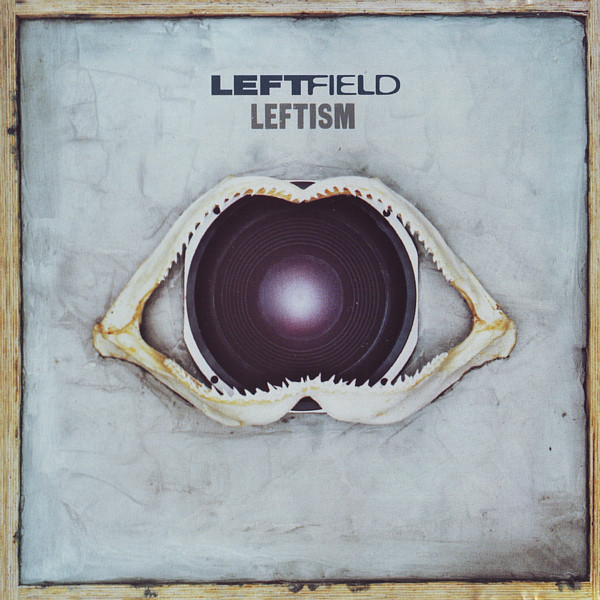
The problem with approaching Electronic music is that it demands such a radically different style of listening. Everyone used to moan back in ’06 how uhn-tiss isn’t real music. It was stupid, but after checking Electronic music they had a point. How the music worked was so different in function and form that at first all you could think was ‘it’s just repetitive bullshit for mindless drones’.
There was rarely, if ever, a melodic hook or a catchy riff to hold on to. Nowadays we have the build-up-and-bass-drop structure, but all it does is borrow the verse-chorus-verse and remove the vocals. Tracks went on for 9 minutes, sounding both like they’re not changing and like they’re in a new place. Electronic music was confusing, and I wasn’t sure when I began my exploration what to look for. I knew there was an element of danceability to it, elements of progressive structure and elements of atmospherics. I just couldn’t make it gel together, couldn’t find the larger context to put it in.
Leftism is the go-to album for anyone who wants to get into actual Electronic music. Compared to other popular Electronic acts – whether it’s the Big Beat of Prodigy or the loud Brostep of Skrillex or the Pop style of Daft Punk – this is ‘real Electronica’. I don’t mean it in a snobbish way, since all the aforementioned artists are quite awesome. It’s that they won’t help you understand how Electronica works in general. They adapt other genres into Electronica so you can headbang to the Prodigy as if it were a Rock band with better drumbeats.
What Leftfield do here is combine a variety of genres into one cohesive whole without having a larger aim besides being danceable. Leftfield’s strength is that their music looks to the mainstream while not straying from how Electronica works. The problem with Orbital and Underworld is that they were too artistic, too weird for anyone who only listened to the Pop radio.
The most notable difference is that Leftfield’s drums hit harder. Underworld and Orbital never made something so dancefloor friendly like “Afro-Left” and “Release the Pressure”. These songs are more concerned with grooves, with how the drums feel to the ear. The layers upon layers of sound are there – what self-respecting Electronica act doesn’t have these? – but you’re not supposed to look for it.
Leftfield’s music is warmer and more inviting. The build-ups are ambient, but they’re easy ambient, a collection of happy, gentle sounds. “Release the Pressure” defines their modus operandi with the ambient intro and the hard drums that kick in. It shows their influence from other genres by adapting a quasi-Reggea bit and vocals. The usage of vocals in the ambient intro also helps to ease into the genre. By the time the drumless “Melt” appears, you’re used to it.
This warmth is the real key to Leftfield’s brilliance. It’s not music for raves where everyone is already on drugs or knows the music. The album wants everyone to join in. Many genres are here besides house – Downtempo on “Original”, Big Beat on “Inspection” and Drum’n’Bass on “Storm 3000” and the result is this kaleidoscope that fascinated by how beautiful music can be. There’s totality to this record. If someone told me this is their all-time favorite record, I wouldn’t be surprised.
There’s a song here called “Song of Life” and I couldn’t think of a better title for a Leftfield song with how everything here brims with life-affirming energy. People have this weird aversion to Dance music, as if only music that’s depressed is serious and has ‘content’. Yet this album leaves me with a sense of wonder that no extremely technical guitar solo can achieve. They put “Melt” in the same album as “Open Up”, because you can both chill and marvel at the stars before (or after) you start a moshpit – because why not? They pile layers of sound in “Afro-Left” and let it change as it goes on, because a song can be both progressive and a banger. Every song has clear hooks, whether it’s the drums or the bass or just sounds that stick out. Electronica doesn’t have to be difficult. A listener doesn’t have to play the song over and over until he finds all the layers but can already hop in.
The highlight is actually “Space Shanty”, which wasn’t released as a single. Every time I listen to it I’m surprised by how well constructed it is, yet how hard it bangs. It’s also the definitive House track, since the elements of repetition and progression are prominent in it, feeding off each other without negating each other.. All of the loops that drive the song change a little as it goes on. The BPM remains the same, but the climax sounds nothing like the intro. At the same time, there’s a separation between loops that create a groove and loops that provide atmosphere. No House track summed the genre as well as that one.
If you haven’t started exploring Electronic music, you should. This is where you should start your journey. Some tracks show you the more experimental and artistic side of things. Others just want to make you dance. There are a few that do both and there’s, of course, “Space Shanty”. Best of all, this album sounds like a monument. Nothing about it hints it was just a collection of singles and some new tracks. If music’s purpose is to connect people, to make us happy and love our life a little then no one has a reason to avoid this.
4 inspections out of 5
